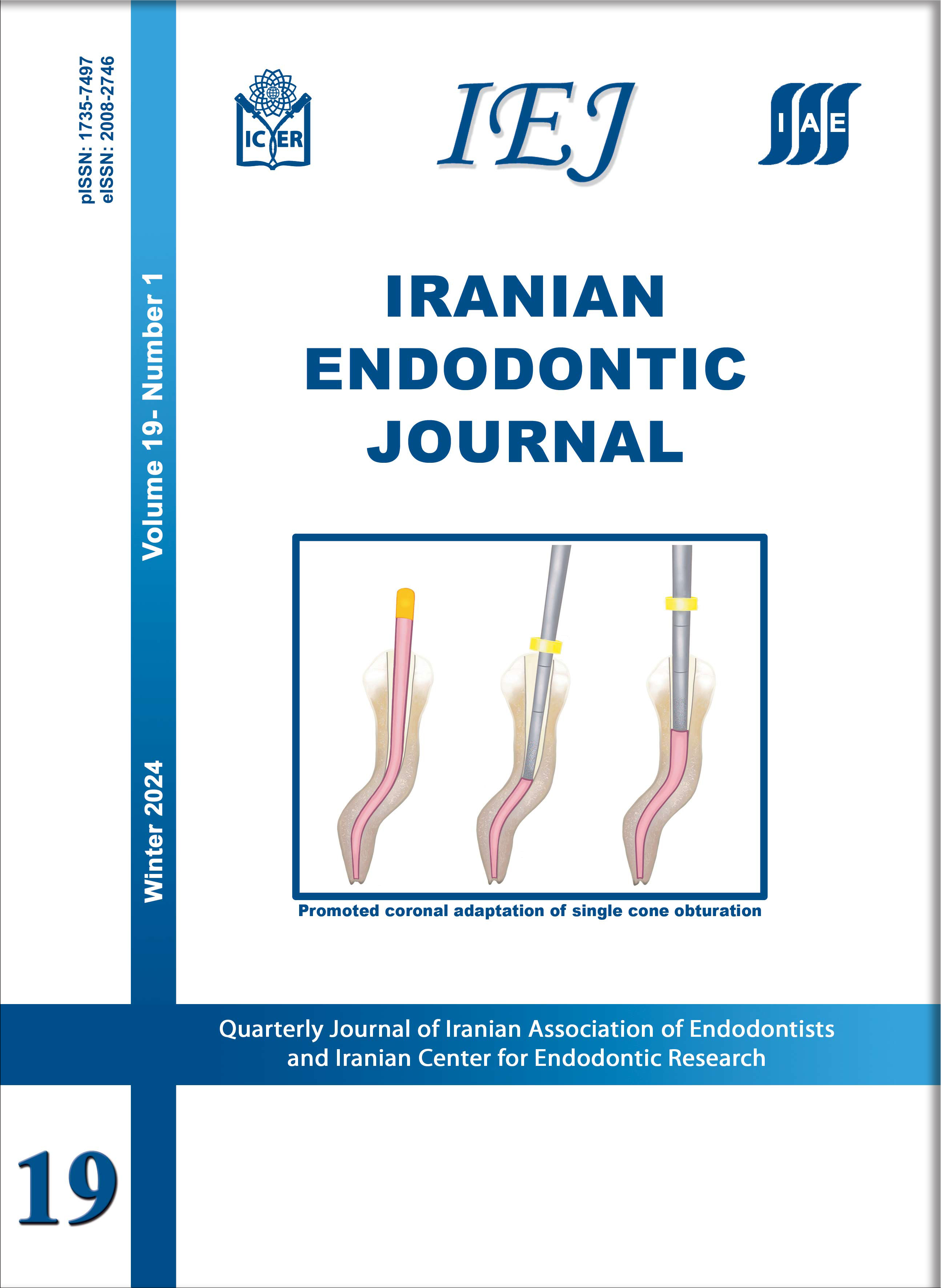SEM evaluation of pulp reaction to different pulp capping materials in dog’s teeth
Iranian Endodontic Journal,
Vol. 1 No. 4 (2007),
20 Dey 2007,
Page 117-124
https://doi.org/10.22037/iej.v1i4.367
Introduction: This investigation evaluates the effects of mineral trioxide aggregate (MTA), calcium hydroxide (CH) and calcium enriched mixture (CEM) as pulp capping materials on dental pulp tissues. Materials and Methods: The experimental procedures were performed on eighteen intact dog canine teeth. The pulps were exposed. Cavities were randomly filled with CEM, MTA, or CH followed by glass ionomer filling. After 2 months, animals were sacrificed, each tooth was sectioned into halves, and the interface between each capping material and pulp tissue was evaluated by scanning electron microscope (SEM) in profile view of the specimens. Results: Dentinal bridge formation as the most characteristic reaction was resulted from SEM observation in all examined groups. Odontoblast-like cells were formed and create dens collagen network, which was calcified gradually by deposition of calcosphirit structures to form newly dentinal bridge. Conclusion: Based on the results of this in vivo study, it was concluded that these test materials are able to produce calcified tissue in underlying pulp in the case of being used as a pulp capping agent. Additionally, it appears that CEM has the potential to be used as a direct pulp capping material during vital pulp therapy.




